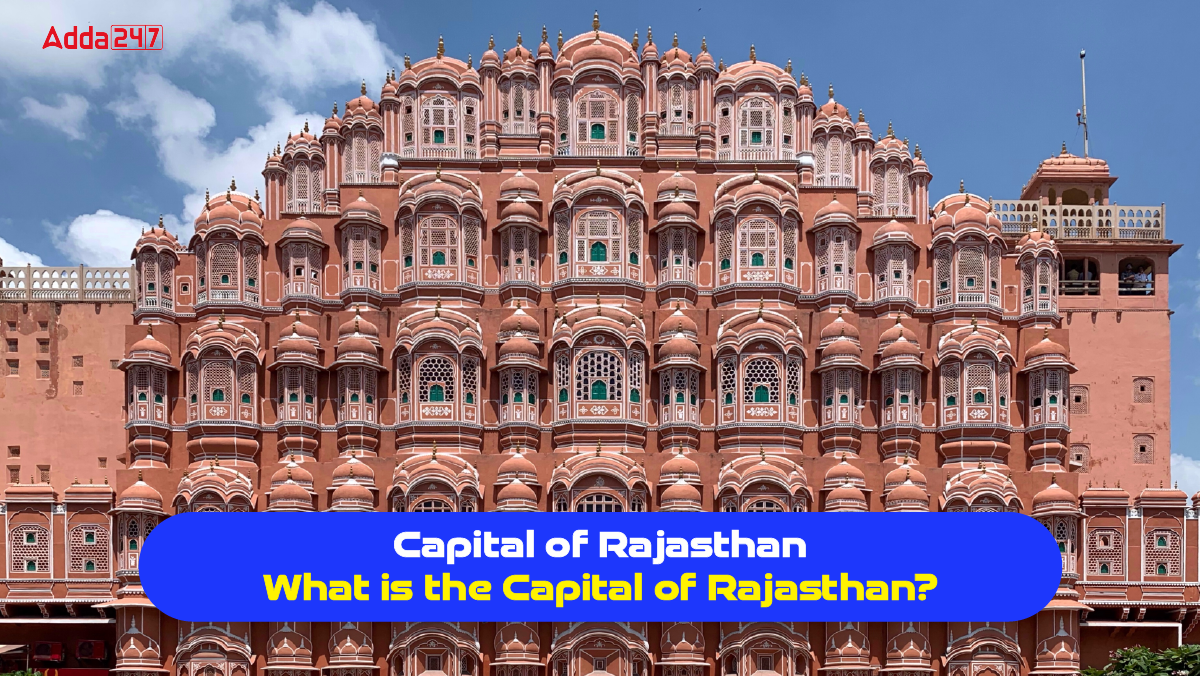Capital of Rajasthan
Jaipur, the capital of Rajasthan, is a city that excludes lively hues, a storied past and architectural splendor. Renowned as the Pink City, Jaipur harmoniously merges traditional charm with contemporary elements. This article aims to unravel the captivating features of Jaipur, the largest city in Rajasthan, delving into its cultural, historical and economic importance, showcasing the allure of this captivating urban center.
Historical Significance of Jaipur, the Capital of Rajasthan
Jaipur, the capital of Rajasthan, was founded in 1727 by Maharaja Sawami Jai Singh II who was the ruler of Amber. This beautiful city was designed by the architect Vidyasagar Bhattacharya. The city was meticulously planned according to the principles of Vastu Shastra and Shilpa Shastra, ancient Indian architectural sciences. Jaipur is one of India’s first planned cities and stands as a testament to the foresight of its creators.
| Other Important Articles | |
| States and Capitals of India | Capital of Uttar Pradesh |
| Capital of Chhattisgarh | Capital of Uttarakhand |
Jaipur, the “Pink City”
Jaipur has earned the moniker of the “Pink City” due to its distinctly colored buildings. In 1876, the city Jaipur was painted pink to welcome the Prince of Wales and this tradition has been upheld ever since. The unique pink hue is said to represent hospitality and is now a prominent characteristic of the city. The buildings in the city center, including the Hawa Mahal, City Palace and Jantar Mantar, proudly showcase this distinctive pink color.
Cultural Significance of Jaipur
Jaipur is renowned for its cultural treasures and historical landmarks. The UNESCO World Heritage Sites, Jantar Mantar and Amber Fort, are among the city’s most iconic attractions. Amer Fort, perched on a hill, showcases stunning Rajput architecture and panoramic views of the surrounding landscapes.
The city is also home to a myriad of other captivating destinations, including Nahargarh Fort, City Palace, Jal Mahal, Hawa Mahal, Albert Hall Museum, Jaipur Zoo, Sanghiji Jain Temple, Moti Dungri Ganesh Temple, Garh Ganesh Temple, Birla Mandir, Jaigarh Fort and more. These sites offer visitors a glimpse into Rajasthan’s opulent history and cultural diversity.
Architectural Marvels of Jaipur
Jaipur boasts a treasure trove of architectural marvels, many of which are UNESCO World Heritage Sites. The city is home to several historical palaces, forts and observatories that exemplify the architectural brilliance of the bygone era. Key attractions are:
- Amber Fort (Amer Fort): A majestic hilltop fort, known for its artistic style, grandeur and intricate architecture.
- City Palace: A splendid complex that houses the Royal Palaces, museums and courtyards.
- Hawa Mahal: The iconic “Palace of the Winds” with its unique honeycomb façade.
- Jantar Mantar: The largest stone astronomical observatory in the world, featuring several impressive instruments for measuring time, predicting eclipses and tracking stars.
- Nahargarh Fort and Jaigarh Fort: Forts perched on the Aravalli hills offering panoramic views of Jaipur and its surroundings.
- Jal Mahal: A water palace in the middle of Man Sagar Lake, offering a breathtaking sight.
Know About Rajasthan, the Land of Kings
Rajasthan, often referred to as the “Land of Kings,” is a state of remarkable diversity and historical richness. Here are some interesting facts about this vibrant state:
- Geographical Extent: Rajasthan is India’s largest state by area, covering 10% of the country’s total land area.
- Population: It ranks as the seventh most populous state in India.
- Border States: Rajasthan shares its borders with Gujarat, Madhya Pradesh, Uttar Pradesh, Punjab and Haryana.
- Geographic Significance: The Tropic of Cancer passes through the southern tip of Rajasthan, making it a unique location on the Indian map.
- International Boundary: Rajasthan shares an international boundary with Pakistan, adding to its historical and strategic significance.
- Key Cities: Apart from Jaipur, other important cities in Rajasthan include Jodhpur, Ajmer, Bikaner, Udaipur, Kota and Bharatpur.
- Pokhran Nuclear Test: Rajasthan was the site of India’s successful underground nuclear weapon tests in 1974 and 1998, conducted at Pokhran.
Find More General Studies News Here




 Which Country is Known as the Land of Ch...
Which Country is Known as the Land of Ch...
 Which Bird is known as the King of Birds...
Which Bird is known as the King of Birds...
 Which City of Austria is Known as the Ci...
Which City of Austria is Known as the Ci...







